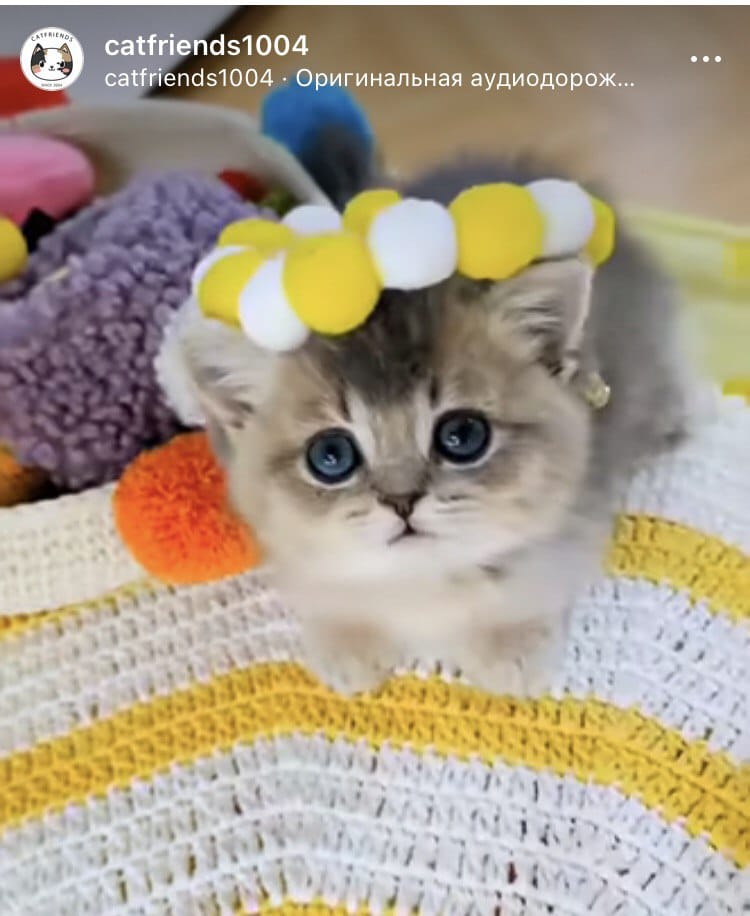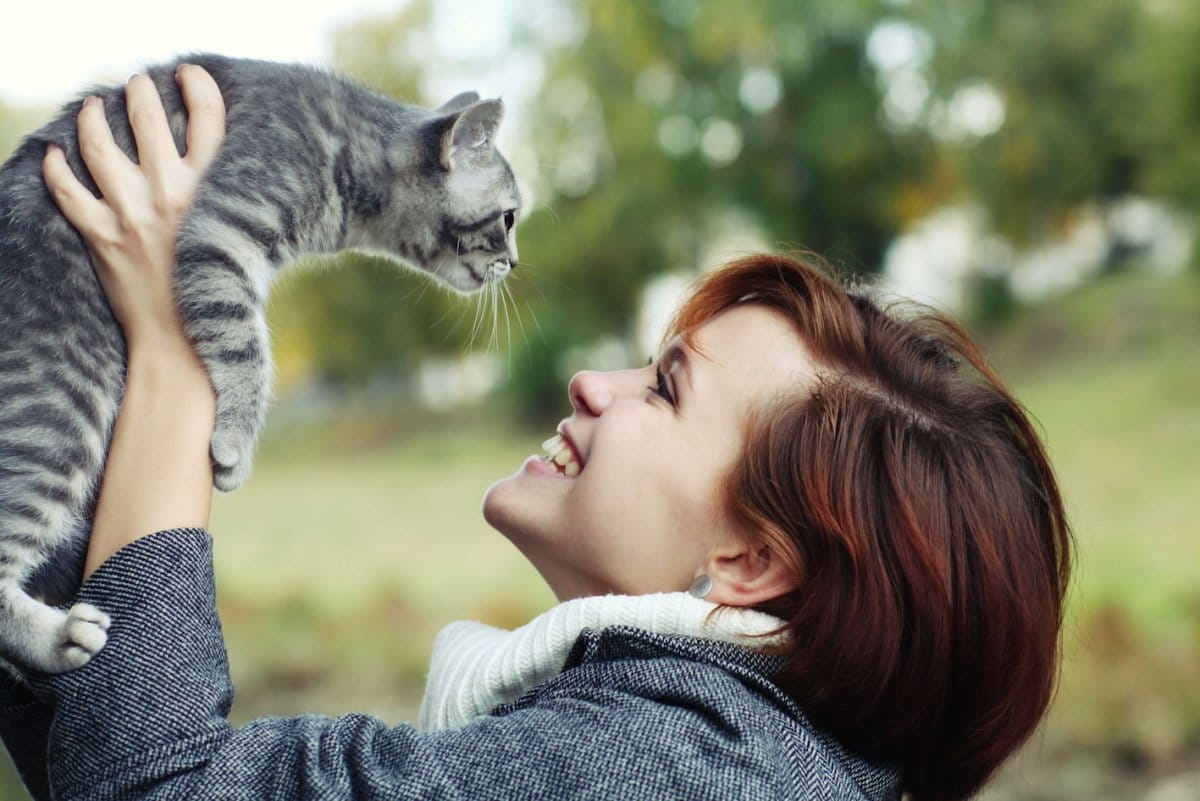It is a common belief that cats feel attachment only to the place where they live, and not to the person who cares for them. We decided to check whether this stereotype about these pets is true.
The stereotype about cat independence and love of freedom is reflected in fairy tale Rudyard Kipling's "The Cat That Walks Alone" and removed based on its Soviet motives cartoons. Counts, What cats, unlike dogs, get attached not to the person, but to the house in which they live. In this regard, some veterinarians even recommend, going on a short vacation, leave cat in his usual apartment and ask relatives or friends to visit him periodically, and not move the animal to another house where there will always be people with him. Interestingwhat's in scientific environment even are underway There are debates about whether a cat can be considered a completely domesticated animal or whether it still retains many of the characteristics of a wild one, including almost no need for communication with humans.
According to calculations manufacturer of food and pet products Mars Petcare, in 2021, 63.4 million pets lived in Russia, 40.8 million of which were cats, and 22.6 million were dogs. In 2016, GfK spent in 22 countries of the world a survey on preferences in choosing pets. Russia turned out to be the most cat-loving country in the study: 57% of households in the country reported that they had a cat, 29% had a dog, 11% had fish, and 9% had birds. VTsIOM received similar data: an analytical review released in 2019 and entitled “Russia is a country of cats,” reportedthat 54% of Russian families keep at least one cat at home.
There were cats domesticated about 10,000 - 12,000 years ago during the transition of man to a sedentary lifestyle and with the beginning of the development of agriculture. The branch of zoology that studies the anatomy and physiology of domestic cats called felinology. Cat Fanciers Association (CFA, one of the largest felinological organizations) highlights There are 42 cat breeds eligible to compete in the championships, and three more (Khao Mani, Likoi and Toy Bob) that may soon be recognized. The International Cat Association is broader in its views and highlights as many as 73 breeds. At the same time, many breeds that have developed externally are not yet recognized by world organizations - for example, Chinese tank cats are recruiting hundreds of thousands of followers on Instagram*, but not yet included in the registers. In the description of each breed, felinologists indicate the predominant character traits of the cat - for example, greater sociability or the desire for independence from humans.

Scientists go beyond descriptive characteristics and study types of cat attachment. In 2015, researchers from the British University of Lincoln adapted the popular psychological test “Stranger Situation”, developed in the mid-20th century by psychologist Mary Ainsworth to assess an infant’s attachment to his mother. The original experiment examined the behavior of a child aged one to one and a half years in a playroom alone, in the presence of his mother, in the presence of his mother and a stranger, and only with a stranger. Three situations were left for cats: in an unfamiliar room with two chairs and alone, in the same place with the owner and in the same place with a stranger. A hidden camera monitored the animal's behavior. The scientists noted that the only difference was that when the owner left the room, the cats meowed louder than when they were left alone by a stranger. Professor Daniel Mills, author of the study, commented this is: “We see no further reason to believe that the bond between cat and owner resembles secure attachment.” According to scientists, this may be due to the fact that cats were domesticated not as long ago as dogs. The scientists also took into account the nature of the relationship with the owner: cats usually have less time and intensity of contact with the owner.
The conclusions of British scientists were questioned by their American colleagues. In 2019, researchers from Oregon State University assumedthat people still underestimate a cat’s affection, believing that deep feelings are more typical for dogs. The authors of the experiment invited 79 people along with their pet kittens aged three to eight months. Scientists took the mother-infant connection as the ideal of attachment, since if the mother is in the same room with the child, he feels calmer and explores his surroundings more confidently. Instead of the Ainsworth test, the researchers used an adapted Safety Basic Test (SBT), also used in child-parent psychology. First, the owner spent two minutes with the animal in the new room, then left it for the same period of time, leaving the animal alone, and returned again for another two minutes. Having studied the behavior of tailed animals in each time period, scientists came to the conclusion that the majority of them (64%) show strong attachment to their owner, and 36% show ambivalent or unstable attachment. Interestingly, the numbers almost coincided with the distribution of affection in children and dogs. Thus, studies by other authors have shown that 65% of infants show stable attachment to the parent, 35% - unstable, and in dogs indicator stable attachment is lower than in children and cats - only 58%.
Scientists did not stop with kittens, because attachment could change with age, so they conducted a similar study on a group of adult animals. For this purpose, owners of cats older than one year were invited - together with their pets they took part in the same testing. Of the 38 adult animals participating in the experiment, 65.8% (that is, even slightly more than among kittens) demonstrated persistent attachment to humans. Dr. Christine Vital, one of the study's authors, shares with his observations: “Attachment is a biologically significant behavior. "Our research shows that when cats live in a state of human dependence, attachment to people can be a flexible adaptation and most cats use people as a source of comfort."
Not all researchers consider this methodology acceptable for studying cat attachment. Dr. Carlo Siracusa from the University of Pennsylvania School of Veterinary Medicine draws attention to this feature: “Dogs are easy to study: you can bring them to the laboratory, and they will be happy. But the cat is an extremely territorial creature. "Her behavior is so dependent on her environment that if you put her in a lab, what you see doesn't really reflect her normal behavior."
A possible reason why cats' affection for people is not taken seriously is the stinginess of external manifestations. “Cats are neither people nor dogs. People [to express affection] hug and kiss. The dogs become extremely excited and jump up and down with joy. Cats don't do anything like that. They are much more elegant. They are approaching us. They rub their heads against us. That’s enough for them, then they leave,” tells about typical displays of affection in felines Syracuse. Clinical veterinarian Karen Hiestand of the University of Sussex agrees: Because domestic cats are descended from the African wildcat, a non-pack animal, they are not very social animals. The main way to show affection to another representative of its species is allogrooming (this is the scientific name for the process when animals lick each other).

At the same time, indirect data on animal behavior still indicate that humans are extremely important for cats. Japanese scientists decided check whether cats remember the owner's voice. To do this, 50 animals were tested in two rooms: at home and in a cafe. The cat's name sounded from speakers located in different parts of the room and even outside it, and it was pronounced either by the owner of the animal or by a person of the same sex, unfamiliar to the pet. The cats clearly identified their familiar voice and minimally reacted to the alien one. Dr. Saho Takagi, one of the study's co-authors, sure: “These results suggest that cats are very worried about their owners, closely monitoring their every action, wondering what will happen next.”
Thus, most scientific experiments show that cats have a high level of attachment to their owners - a feeling that animals demonstrate as often as babies, and even slightly more often than dogs. Moreover, many experiments were carried out in unfamiliar environments for cats, which could affect the animals’ behavior. It is also important to understand that the ways cats express affection are different from those that dogs or people are accustomed to when communicating with each other. Cats are attached to their owners in their own way, although they do not often run out to meet them or show other signs of affection. Therefore, “a cat that walks by itself” is rather a misconception that does not take into account the psychology of these pets.
*Russian authorities think Meta Platforms Inc., which owns the social network Instagram, is an extremist organization; its activities in Russia are prohibited.
Cover image: Amiel

Most likely not true
If you find a spelling or grammatical error, please let us know by highlighting the error text and clicking Ctrl+Enter.






